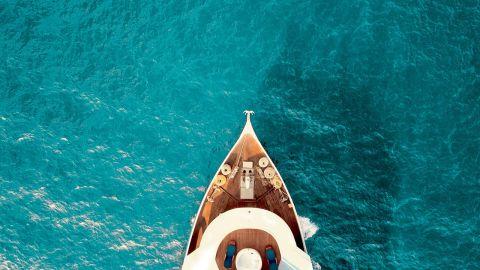Mid Transat: energy and innovation
If you could capture the energy and ingenuity of the Mini Transat race I’m sure you’d have a panacea for the troubles of our times.
Many sailors in this big race in 21ft little boats, which runs from Douarnenez in Brittany to Guadeloupe, are engineer-inventor-builders. They are brimming with ideas for how to make their boats go faster, and the spirit of camadarie and friendliness among the 84 entries is palpable. If ever we need to restart a civilisation, you could just take a group of Mini sailors – they would make it work and it would be a nice place.
The Mini Transat is the legendary solo transatlantic race in supercharged 21ft boats, which has run every two years since 1977. The boats have evolved to become sailing’s ultimate hot hatches, limited to a tiny package 6.5m long and 3m wide but dynamite downwind, reaching over 20 knots with insane amounts of sail set on huge bowsprits.
The prototype class sport canting keels, canting masts, and have traditionally been the affordable test bed for all kinds of experimental ideas that stuck and went mainstream. Running parallel is a more numerous series production class of cheaper and less high tech boats that produce ultra fierce competition.
They were to have started this weekend, but with big winds forecast and punishing sea conditions that would have met the 84-strong fleet off Cape Finisterre, the race committee sensibly decided to delay the start until further notice. Forecasters are predicting that the race may have to wait until next weekend for a window.
The reason is not too hard to imagine as soon as you see a Mini up close. They are little more than overgrown dinghies. The lightest is only 750kg. They heel as you step on board. There is no shelter on deck. So although they can scorch downwind, upwind they are a completely different animal, just a tiny little boat attempting to batter into the sea while throwing their sole occupant around like a rag doll.
The experience was described to me by British sailor Pip Hare as “the worst sailing experience you’ll ever have.”
So instead of the planned start on Sunday, the Mini skippers took part in a parade of sail round a triangular course for the benefit of hundreds of spectators on shore. Ghosting out to the start in glassy calm conditions, it seemed a quite incongruous sight: a drifting pageant of 80-odd storm bound yachts.
I went out with Pip Hare (pictured above) and Nikki Curwen on Pip’s production series Pogo 2, The Potting Shed. Pip will be doing the race; Nikki will not, unfortunately, as despite sailing the 2,000 miles needed to qualify for a place she was too late to get an entry. The Mini Transat is always oversubscribed and there was a waiting list of more than a dozen this year.
The Classe Mini remains totally impervious to economic troubles. It is – just about – affordable and is the place to experiment with ideas, or to complete an adventure that has enormous symbolic meaning in France. However, the difficulty of raising money has seen a very obvious slowing down of Mini innovation.
This year, there is only one new ‘proto’, Stan Maslard’s Group Sefico. Its most revolutionary idea is a removable T-foil to fit on the transom, though that is yet to be ruled on as legal in the class.
But this very stalling of innovation, a feature that is a prime driving force of the Classe Mini and its contingent of sailors, has jolted members into debating how to unclasp the rule to allow more developments. Class president Olivier Avram tells me that a decision will be reached by the end of the year on changes to the rule. Foils are certain to be allowed in the race, and under discussion is the possibility that these could be set well outside the box rule’s limits of beam and length.
Another interesting idea under development is a wingsail for the class which, if combined with foils, could produce a Mini that is more of a flying machine. “We know the next stage is to make the Mini fly,” Avram says. An experimental wingsail Mini has already been commissioned, designed and will be built next year.
As they wait to get going on this race, the Mini sailors are in suspended animation, watching the forecasts and waiting, checking and rechecking the relatively small inventory of food and gear that you can fit on these tiny machines.
Read more at http://www.yachtingworld.com/blogs/elaine-bunting/535453/mini-transat-energy-and-innovation#w6OXReqkEePL1xub.99


